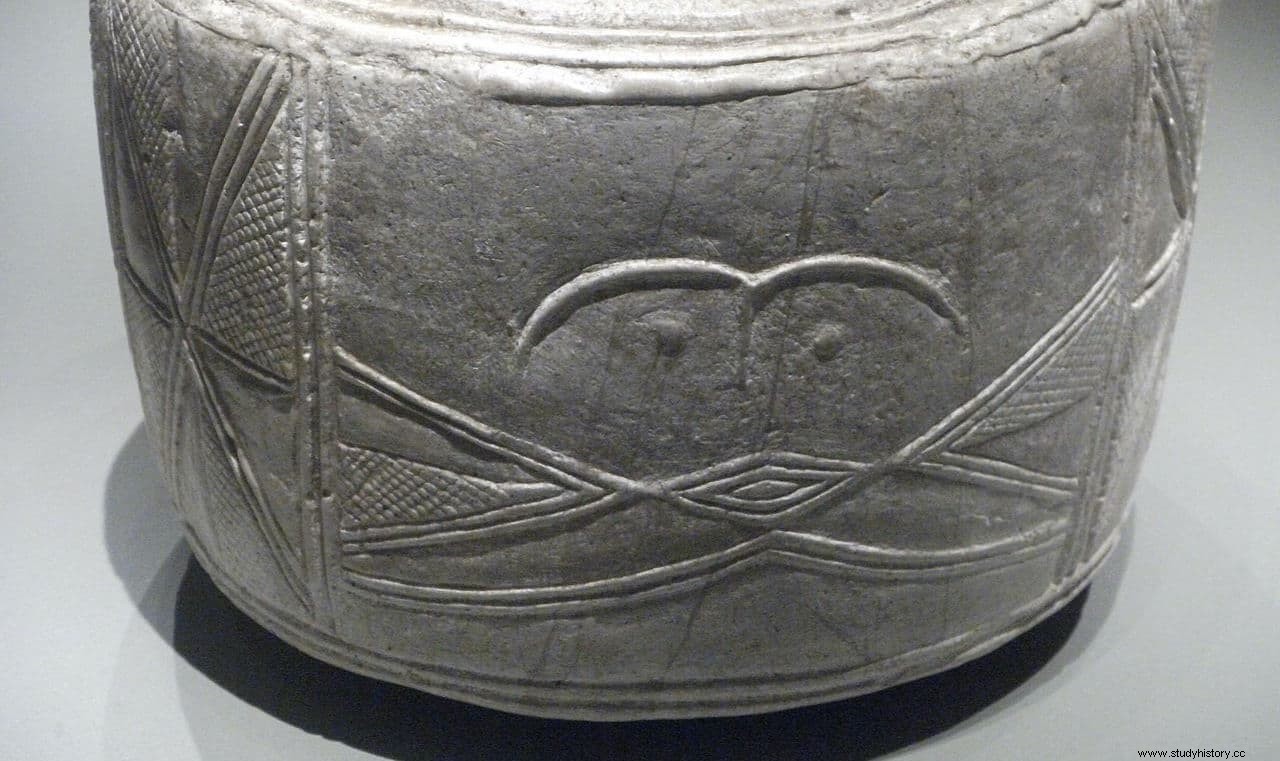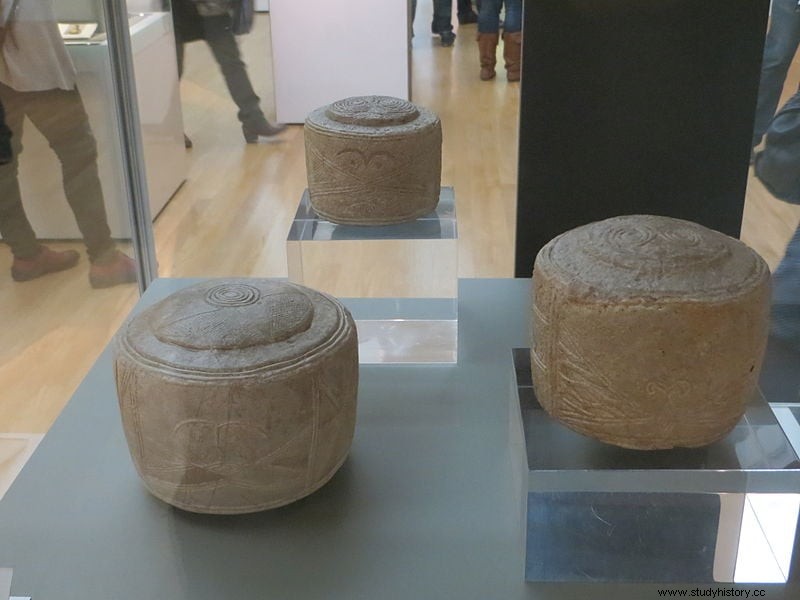The Folkton Drums are three cylindrical limestone objects found in a child's grave dating from around the time Stonehenge was built.
They were found in 1889 by William Greenwell, near the town of Folkton in North Yorkshire, England. Greenwell, who was a priest, had studied at the University of Durham, combining his two interests, religion and archaeology. The latter could have influenced the fact that among his family's properties was the site of the ancient Roman camp of Longovicium.
He began his excavations at Danes Graves in 1864, one of the British Iron Age Arras Culture sites, receiving no small criticism for his poor methods. However, that did not stop him and he continued his prospections at various sites, returning to Danes Graves in 1897, where he excavated up to 53 burial mounds.
His gigantic collection of Neolithic and Bronze Age antiquities and artifacts, both acquired and recovered by himself, was legendary at the time, and before his death he donated it to the British Museum. 
In 1889 Greenwell was excavating a burial mound belonging to the enigmatic Beaker Folk culture in which numerous human remains were found. There was a main burial chamber and several other secondary ones.
It would be precisely in one of the latter where the skeleton of a child appeared accompanied by the drums, one located behind his head and the other two on the sides. The body was buried in a north-south orientation, with the head pointing north.
There are three solid limestone cylinders drum-shaped, between 12 and 15 centimeters in diameter and between 8 and 12 centimeters high, which have geometric and anthropomorphic engravings. The upper part of the cylinders is decorated with concentric circles and two of them include a pair of stylized eyes that seem to represent a human face. It is estimated that they date from the same time as Stonehenge, between 2600 and 2000 BC
The drums are a rarity as no similar artifacts have been discovered at any European site and their exact function is not yet known. The most accepted theory is that the child they were accompanying must have had a high social status and, following custom, he was buried accompanied by special objects that denoted that position.

The decoration technique used is very similar to that used to engrave wood, so some specialists think that similar objects were made of wood and have therefore not survived. As for the motifs, although their meaning is unknown, they are very similar to those found in late Neolithic pottery.
In 2015 archaeologists from the University of Southampton carried out an analysis using photogrammetry, which revealed evidence of previously erased decorative motifs, over which new ones were arranged. This fits in with the common Neolithic practice of reusing objects over and over again over time, removing and adding new decorative motifs.
A more recent study, from 2018, suggests that they may be units of measurement used for the construction of Stonehenge.
Fonts
Stonehenge (John North) / Google Arts &Culture / British Museum / Digital imaging and prehistoric imagery:a new analysis of the Folkton Drums / Wikipedia
